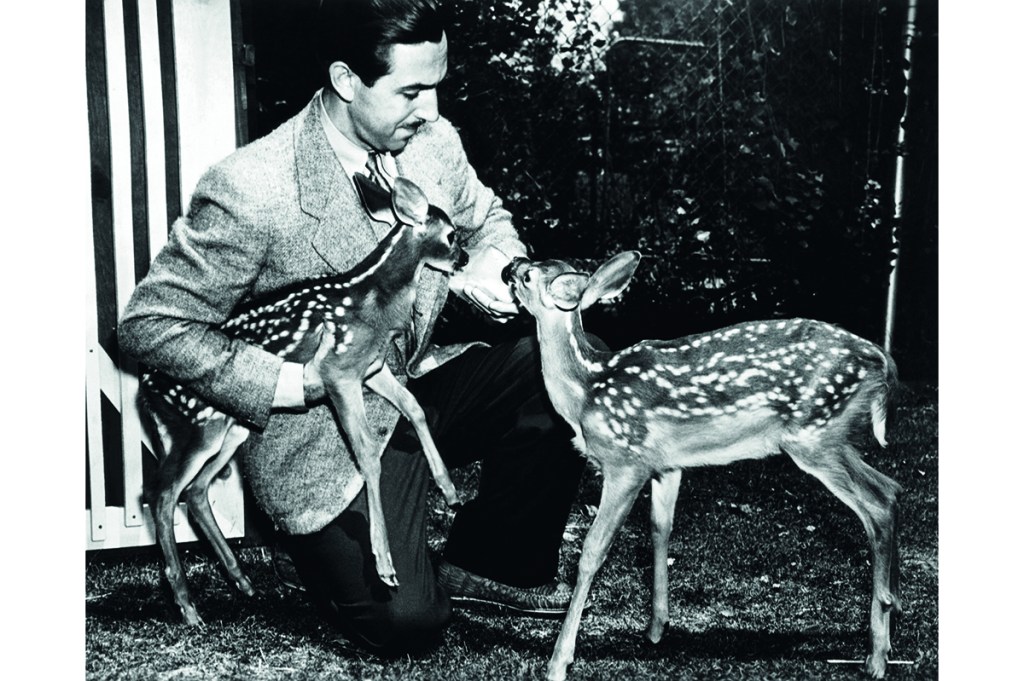It never occurred to me that one day, I would review Bambi (the novel). If it had, I would not have expected that its story and backstory would, among other surprises, include the Nazis, a communist, pornography and talking leaves. In fact, I didn’t even know that the film had been preceded by a novel. Felix Salten wrote Bambi: Eine Lebensgeschichte aus dem Walde in Vienna, where it appeared as a newspaper serial in 1922 before being published in book form in Germany the following year.
It debuted in America in 1928 as Bambi, a Life in the Woods, translated by none other than Whittaker Chambers, already a communist, but not yet in the Soviet agent phase of his astoundingly protean career. The translation sold well but was eclipsed by Walt Disney’s Bambi (1942), an eclipse probably prolonged by a questionable interpretation of US copyright law. The Original Bambi: The Story of a Life in the Forest is a new, more precise translation of Salten’s original by Jack Zipes, professor emeritus of German and Comparative Literature at the University of Minnesota. Zipes has also written an informative introduction, albeit one that is unmistakably the work of someone on the left side of the political woods:
Although [Salten] was impressed by Lenin and Trotsky, his support for socialism was meager, largely because he lacked enough of a command of political history and theory to grasp the complexities of the politics at that time.
Oh. Zipes also provides a “Word of Warning.” The Bambi we think we know, he explains, is a “diluted version” of the original, which “was never intended for children.” Salten describes brutal animal-on-animal violence (crows kill a young hare “in a cruel way,” a fox tears a pheasant apart). Then again, that could be a salutary message for today’s youngsters, who are softened up for greenery by sentimental talk about our feathered and furry “friends.”
Twenty-first century adults might struggle to get much enjoyment from this book. It may not be for children but is written in a style that is sometimes childish or, to be kind, faux-Aesopian. Anthropomorphism is hard to pull off, and Salten doesn’t always succeed, although a conversation between two leaves about death does work. But if the novel can flag, the tale behind it is compelling.
Felix Salten (1869-1945) was born Siegmund Salzmann into a Hungarian Jewish household. Not long after Siegmund’s birth his father moved the family to Vienna in search of a better life. This ultimately eluded him, though not Siegmund, who weathered a youth partly spent in a working-class district where antisemitism was far from genteel. During his teens, Siegmund Salzmann became Felix Salten, part of the reinvention that accompanied a rise, fueled by talent, hard work, autodidacticism and (in Zipes’s words) some “ambitious and shrewd” social climbing from an insurance agency to no small measure of literary, journalistic and social success.
Salten was a hit in cultural circles and palled around with the aristocracy. However much he might have wanted to appear “fully” Austrian, he didn’t see that reinvention through to its conclusion by renouncing his Jewish roots. Instead, he publicly supported Zionism and wrote frequently about antisemitism. He knew that assimilation could only take him, or any Jew, so far.
It is no big leap to suspect that this idea takes four-legged form in the fate of the unfortunate Gobo, Bambi’s cousin (who doesn’t feature in the Disney film). Saved as a helpless fawn by Him — throughout the book, man is referred to as a generic, capitalized He/Him — Gobo returns to the forest, rhapsodizing about the comforts he has enjoyed while living with Him. He believes he has nothing to fear from man and doesn’t observe the precautions taken by the other animals to keep them out of a hunter’s gunsights. The last we hear of Gobo is his “wailing death shriek.”
Nor is it hard to read the novel as an allegorical indictment of antisemitism. At one level, Bambi is obviously a call for greater respect for animals, and for greater humanity by humans, but some of the talk between the deer implies something more specific: “Will He never stop persecuting us?” Salten’s depiction of the mayhem and massacre that follows the hunters’ arrival in the forest unavoidably evokes images of the pogroms that were in Europe’s recent past when Salten was writing, and had returned to Europe’s present when the Disney film was released.
Disney’s Bambi is not Salten’s. To be sure, the movie contains sequences of remarkable beauty, but the novel’s depth and much of its plot are discarded, along with any hint of allegory. Moreover, the gore is gone, and a somewhat bohemian grove is transformed into respectability. Salten was no icon of monogamy and (almost certainly) the author of an infamously tawdry pornographic novel, Josefine Mutzenbacher (1906).
Salten’s Bambi “spent a rapturous night” with Faline, a doe he had known since childhood, and then “romped about with her until broad daylight.” (The Chambers translation is, tellingly, more sedate.) But Bambi abandons Faline before too long, and this makes him feel “more cheerful and freer than he had for many months.” By contrast, Disney’s Bambi turns into a family buck, living happily ever after with Faline and their fawns in what a disapproving Zipes calls “a bourgeois utopia.” Regardless of any class politics, it would have been tricky to include a bolting Bambi in a film pitched at midcentury American families.
The same commercial imperative explains why Uncle Walt marinated Bambi in the special Disney sauce of the saccharine, the cute and the kitsch. No room for the doomed assimilator Gobo, but star billing for Thumper, an almost stupidly cheerful rabbit very vaguely inspired by Salten’s original, Friend Hare, who at times can seem more of a Job: it’s his son who is killed by those crows, and his wife is shot dead. Oh yes, he nearly perishes in a trap too.
Zipes grumbles that Disney used Bambi to justify “male domination and power.” This, to put it mildly, is a giraffe-like stretch, but, to the extent that there is anything to it, the same could be said of Salten’s novel. The theme of the movie, other than that of cervine wholesomeness, is of a harmonious forest as a Garden of Eden. Man the unseen, nameless hunter is a murderous interloper, adding carelessness to his crimes when he and his associates accidentally set that Eden ablaze.
Salten, a hunter with a profound devotion to wildlife — a curious, but not unusual contradiction — is more nuanced. That said, his hunter too is portrayed as villainous; in a foreword to the Chambers translation, the English novelist and playwright John Galsworthy, an opponent of hunting, “particularly recommends it to sportsmen.” In both movie and book, Bambi’s mother is gunned down, but Salten’s He is just one predator in a forest that is filled with them, albeit the only one who kills for fun.
The novel, like the film, is a Bildungsroman, a story of personal growth. Bambi matures with some prompting from his (probable) father, the shrewd, imposing and hugely respected “old prince” — a nod, perhaps, to Salten’s noble chums. The lesson that Bambi absorbs is that the key to survival and, presumably, emulating his father’s elevated status, is self-reliance and holding yourself apart: the opposite of the cozy domesticity endorsed by Disney and embraced by his Bambi. Salten’s view of the natural kingdom is infinitely chillier than Disney’s, but his reader is left in no doubt that the forest is a better place than the world of men, beings who are not as superior as they think they are. In yet another passage in the book that didn’t make it into the movie, the old prince shows Bambi the corpse of a poacher to demonstrate that “He can be conquered like us.” This leads Bambi to the response that the old prince had been waiting for: he concludes that “there’s someone else who’s over us all, over us and over Him.”
Salten’s book is attuned to the anti-modern rejection of the city that figured strongly in Northern European culture at the time. This impulse was particularly pronounced among the far right. No small part of contemporary environmentalism stems from this rejection, even if nowadays its connection to fascism is, for some mysterious reason, rarely mentioned. But no amount of “greenwashing” was going to be enough to save Salten’s work from banning by the Nazis, not only because of his ethnicity but also because of what he had written. Shortly after German troops marched into Austria in the Anschluss of 1938, Salter went into exile in Switzerland. He died there in late 1945, outliving a different type of poacher who had not proved so superior after all
This article was originally published in The Spectator’s January 2022 World edition. .


















